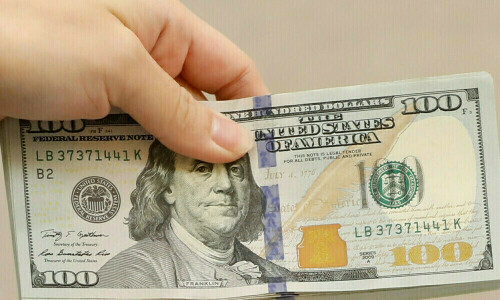Dollar Fluctuates as Trade Optimism and Fed Stance Provide Relief
SINGAPORE: The U.S. dollar initially surged and subsequently stabilized on Wednesday following President Donald Trump’s softened stance regarding the potential dismissal of Federal Reserve Chair Jerome Powell. This development offered respite to investors, while growing optimism surrounding prospective trade agreements bolstered previously subdued market sentiment.
Throughout the week, financial markets have been contending with concerns about the Fed’s autonomy, particularly in light of Trump’s repeated criticism of Powell for not implementing interest rate cuts since the president’s term began in January.
However, on Tuesday evening, Trump appeared to walk back his earlier threats.
“I have no intention of firing him,” Trump stated to reporters at the Oval Office. “I would like to see him be a little more active in terms of his idea to lower interest rates.”
This declaration led to a swift increase in the dollar’s value at the commencement of Asian trading hours, although it had evened out by mid-morning.
The dollar experienced a rise of over 1% against the yen, reaching 143.21 in initial trading, later settling slightly higher at 141.77. In comparison to the Swiss franc, the dollar was last up by 0.29% at 0.8216, after an earlier surge of more than 1%.
The euro was recorded at $1.14, while sterling declined by 0.17% to $1.3311.
Previously, the dollar had been trading near its lowest levels in years against the euro and the Swiss franc on Tuesday, while the yen had peaked at a seven-month high as investors divested from U.S. assets, driven by worries about trade disputes and Trump’s criticism of the Fed.
Prashant Newnaha, a senior Asia-Pacific rates strategist at TD Securities, suggested that while the likelihood of President Trump removing Powell from his position was minimal, his remarks regarding the Fed chair and China were welcomed by the market.
“Markets are realizing the administration cannot afford to let asset prices crash, and this is drawing in the dip buyers,” Newnaha commented. “For now, Trump views propping up markets as providing him with policy leverage.”
Easing Trade Tensions Boost Market Confidence
The overall market mood was further improved on Wednesday by comments from Trump and U.S. Treasury Secretary Scott Bessent, which hinted at a possible easing of trade tensions between the U.S. and China, suggesting that any trade agreement could lead to significant tariff reductions.
Matt Simpson, a senior market analyst at City Index, observed, “Trade is the bigger story here – as how tariffs play out will dictate where the U.S. economy, and therefore U.S. interest rates, are headed.”
Simpson added, “The dollar has been showing tentative signs of a trough since last week, but if Bessent is correct in thinking that trade tensions are to recede, it could prompt prove to be the trigger that dollar bulls were looking for.”
Bessent indicated that neither side considers the existing situation sustainable, adding that the Trump administration’s objective was not to sever ties between the world’s two largest economies, according to an individual present at his presentation to investors at a JP Morgan conference.
Trump also voiced optimism that a trade accord with China might significantly reduce tariffs. He noted that an agreement would lower tariffs on Chinese products, implying that the ultimate deal would not be close to current tariff levels but would not be zero.
Apart from Trump’s criticism of the Fed, investor attention has been focused on trade agreements between the U.S. and various other nations.
After initially setting a baseline import tax of 10% and higher rates for numerous countries earlier in the month, Trump abruptly suspended the steeper levies for 90 days to allow countries to negotiate more favorable rates.
White House press secretary Karoline Leavitt reported that 18 countries have submitted proposals thus far, with Trump’s trade negotiation team scheduled to meet with 34 countries this week to discuss tariffs.
In other currency movements, the Australian dollar increased by 0.49% to $0.6395, while the New Zealand dollar rose by 0.18% to $0.5974.
The dollar index, which gauges the U.S. currency against six other currencies, decreased by 0.4% to 99.165 after increasing by 1.5% in the prior session.
In the cryptocurrency market, Bitcoin rose nearly 2% to $92,942, surpassing $90,000 for the first time since March. Ether experienced a surge of over 4%, reaching $1,768.



Comments (0)
No comments yet. Be the first to comment!
Leave a Comment